Pool season will be winding down soon, so it's a great time to look back at this year's swimming pool trends.
2014 was a great year for pools, with lots of new, innovative ideas emerging. Highlights included making pools more natural spaces, and playing with fresh aesthetics in pool designs.
2014 Swimming Pool Trends
1. Natural Pools
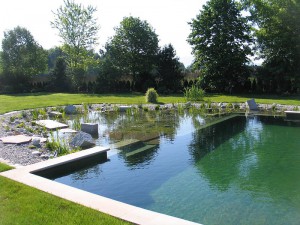
photo by Enricoslasheric via Wikipedia
The goal of "natural" swimming pools is to use the terrain surrounding the pool to it's greatest advantage, so the pool appears to fit seamlessly into the landscape. These pools do not use chemicals or equipment to sterilize or disinfect the pool water. These processes are instead handled by biological filters--plants, namely.
These pools are built in two sections: a swimming zone and a regeneration zone. The swimming zone is where everyone plays. The regeneration zone is connected, but separated by a wall or some other barrier. This zone is filled with plants and flowrs that naturally filter the swimming pool water. It tends to resemble a pond or water garden, but is actually serving a more functional purpose.
Natural swimming pools can take some time to set up--the swimming zone is usable immediately, but the regeneration zone can take up to three years to be a fully functioning filtration system, as the plants need time to establish themselves. However, once established, natural swimming pools require far less maintenance than conventional pools. They are more eco-friendly and very attractive to look at.
2. Glass Tiles
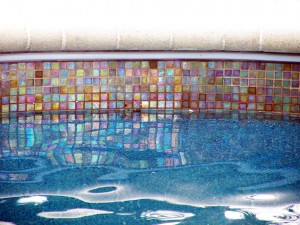
photo by Gwyneth Trevena via mutni.com
Currently, ceramic tile is the most commonly used under the pool's coping to highlight the water's edge. However, glass is gaining in popularity. Much harder than ceramic, glass tiles are harder to crack and break, making them superior to ceramic tiles. They come in a variety of colors and can be a really beautiful way to refresh and modernize the look of your pool. Due to their strength, they can even be used in the bottom and sides of the pool.
3. Infinity Pools
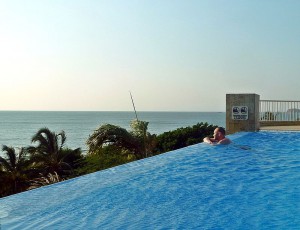
photo by David Shankbone via Wikipedia
These pools have a vanishing edge that makes it appear as if the water extends beyond the pool's edge. It's an optical illusion that gives the impression of greater size, and when situated near a lake or ocean it can appear as if the pool and ocean are one. When used in penthouses, it can look as if the pool disappears into the sky. Breathtaking!
What actually happens is one edge of the pool is lower than the others. The water spills over and into a catch basin that then pumps it back into the pool.
These pools can be rather expensive, as they have special structural support requirements, require mechanical hydraulics, and require some architectural design. Depending on where it is situated, a survey may need to be done to determine that the ground will support the pool.
While these pools are stunning beside natural water features or in high-rises, they can be very beautiful in well-designed backyards.
4. Attached Hot Tubs
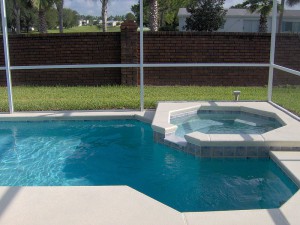
photo by מתניה via Wikipedia
While pools and hot tubs have often gone together like peanut butter and jelly, there was a move away from attaching them. Hot tubs were relocated to their own areas or done away with altogether.
No longer! 2014 saw a reunion of the hot tub and the swimming pool, with many designs rejoining the two in really beautiful ways. No longer simply added to one side of the pool, hot tubs are now getting elevated above the pool, or getting designed into the pool's design so as to appear nearly invisible. The design possibilities continue to be explored, so expect to see more of this pairing in the future.
5. Exercise Pools
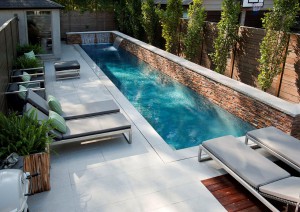
photo via designhome.pics
As the country becomes more and more attentive to the health of the environment, we also are becoming more and more attentive to our own health. For example, the number of entrants into marathons and other fitness events is increasingly dramatically every year. This is great news!
In the swimming pool world, this interest in fitness and health has translated into an increase in pools designed with an eye for beauty and exercise. Also known as lap pools, these pools can be easier and cheaper to build than more conventional pools, as they are often smaller.
There are two sorts of pools in this category: long, narrow pools with straight sides designed for swimming laps; and pools with built-in resistance jets that allow you to swim in place without actually traveling from one end of the pool to the other. Both types can be installed in-ground or above-ground, and both types can be very versatile with lower overall costs (installation and maintenance). They can also be very beautifully designed, with infinity edges, water features, glass tiles, and attached hot tubs. Beauty and function!
6. Hardscapes
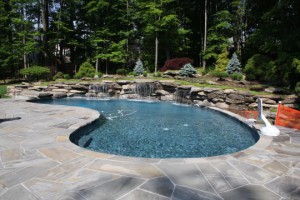
photo via www.hickoryhollowlandscapers.com/
"Landscaping" tends to refer to the yard and plant life around the pool's edges. "Hardscaping" refers to pool decking, patios, coping, and other non-plant features that surround the pool. More attention is being paid to beautifying the "hard" spaces around the pool--gorgeous natural stone tiles are being used; deck and gazebo areas are being constructed. There are a lot of options in this area for adding value, function, and beauty to your swimming pool area. How about a sunken/raised fire pit and patio area paved with travertine tile? Or a pool-side gazebo/bar area on a deck overlooking the pool? The options are endless, and emerging designs are exploring them.
7. Saltwater Pools
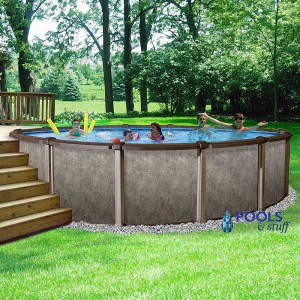
Riviera saltwater pool available from www.poolsandstuff.com
The popularity of these swimming pools has exploded this year. Conventional pools are treated with chlorine or bromine; these pools use saltwater instead. The process actually uses electrolysis that converts salt into chlorine in order to sanitize the water. Maintenance on the pool is greatly reduced with these pools.
They also have health advantages. There are no harmful chemicals in the pool water--you'll feel the effects in your hair, skin and eyes. The water also takes on a silky feel, which is very pleasant and refreshing.
8. Geometric Pool Shapes
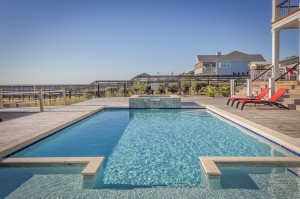
photo by Gregory Butler via Pixabay
For years, freeform shapes have ruled backyard swimming pools, but geometric shapes have been gaining in popularity quickly. These shapes range from perfect circles to squares and rectangles. These shapes tend to make better, more economical use of available space while still allowing for beautiful designs.
9. Custom Water Features
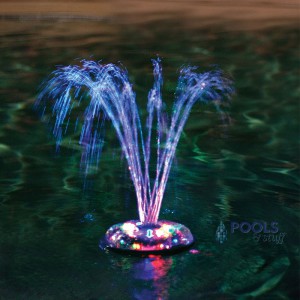
pool fountain available at www.poolsandstuff.com
These are features that add interest and beauty to the swimming pool area. Popular features in 2014 include waterfalls that fall over pool edges or attach to the pool walls; fountains within the pool or beside it; bubblers and jets that create movement in the water; and LED lighting that not only increase safety when swimming at night, they also create moods for pool-side parties.
It's been a great year for swimming pools, and all signs point to a great year in 2015, too. Thanks for joining us for this pool season!
What was your favorite trend for 2014? What do you predict will be big in 2015? Tell us in the comments below!
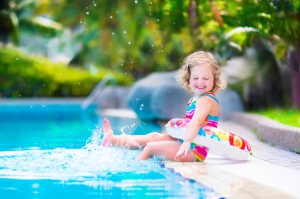









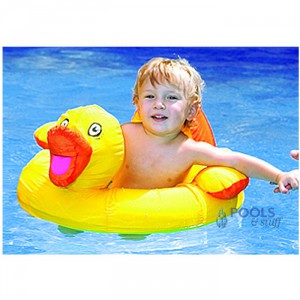
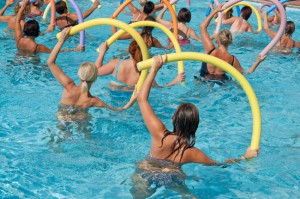
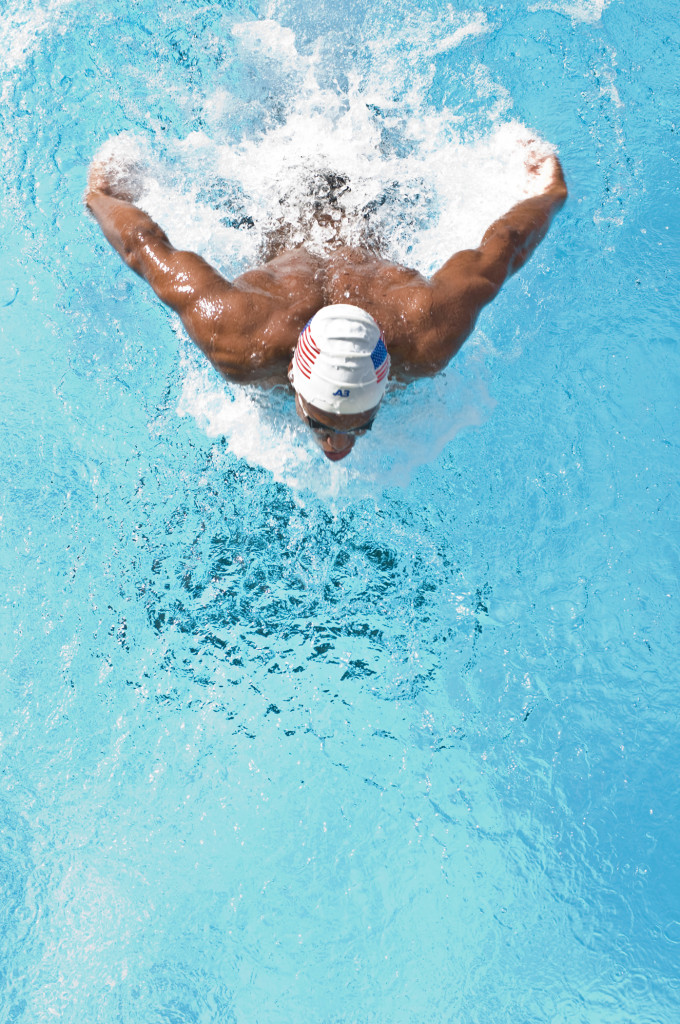
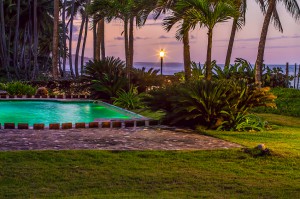

 photo by Enricoslasheric via Wikipedia
photo by Enricoslasheric via Wikipedia photo by Gwyneth Trevena via mutni.com
photo by Gwyneth Trevena via mutni.com photo by David Shankbone via Wikipedia
photo by David Shankbone via Wikipedia photo by מתניה via Wikipedia
photo by מתניה via Wikipedia photo via designhome.pics
photo via designhome.pics

 photo by Gregory Butler via Pixabay
photo by Gregory Butler via Pixabay

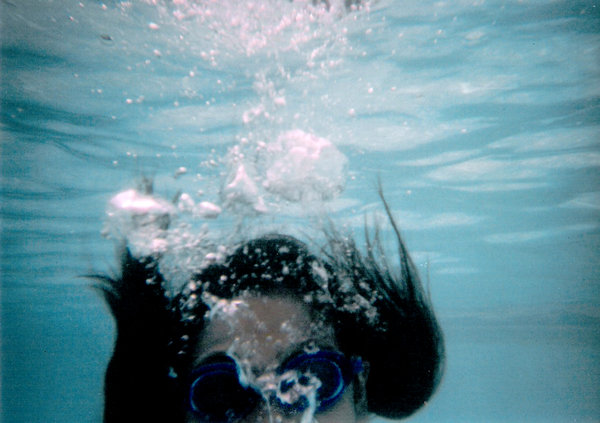 by neener-nina via DeviantArt
by neener-nina via DeviantArt




